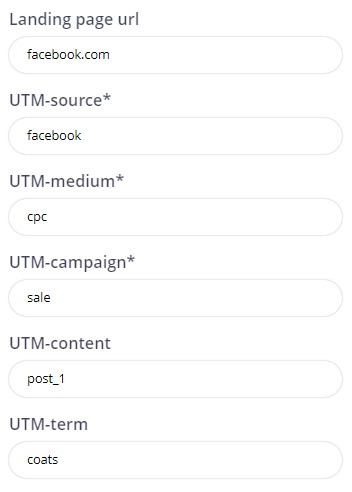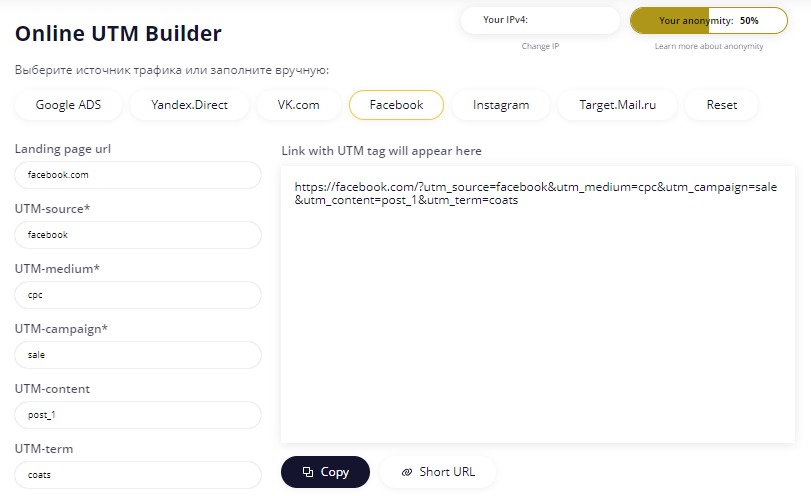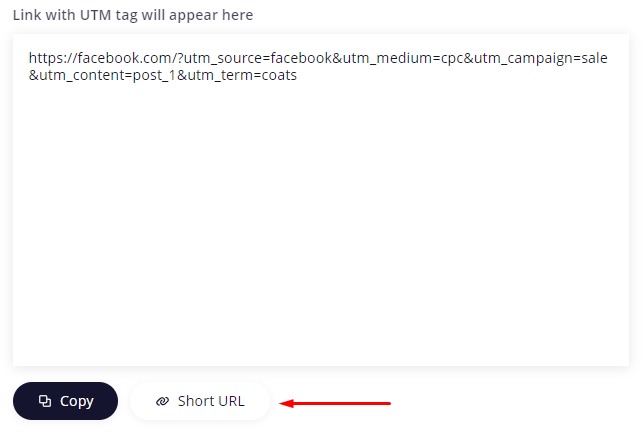IPv4
From $0.72 for 1 pc. 37 countries to choose from, rental period from 7 days.
IPv4
From $0.72 for 1 pc. 37 countries to choose from, rental period from 7 days.
IPv4
From $0.72 for 1 pc. 37 countries to choose from, rental period from 7 days.
IPv6
From $0.07 for 1 pc. 14 countries to choose from, rental period from 7 days.
ISP
From $1.35 for 1 pc. 23 countries to choose from, rental period from 7 days.
Mobile
From $14 for 1 pc. 20 countries to choose from, rental period from 2 days.
Resident
From $0.70 for 1 GB. 200+ countries to choose from, rental period from 30 days.
Use cases:
Use cases:
Tools:
Company:
About Us:
UTM tags are small snippets of text. UTM tags are small snippets of text. They are added to URLs to let analytics tools attribute the website traffic to dedicated ad campaigns, sources, and content. These parameters allow analysts to identify which generate the most clicks, conversions, and engagement. When a tag is named properly, it standardizes the reporting, reduces guesswork, and identifies which channels and creative elements generate the highest engagement or conversions.
Understanding how to use UTM tags and their core parameters helps users achieve more reliable tracking and clearer interpretation of results, which supports data-driven decision-making.
These parameters are query-string fields added to URLs to track where the traffic is coming from.
PURPOSE:
UTM tags are helpful for tracking and analyzing the performance of digital marketing campaigns. They work by encoding the source, medium, campaign, and related details.
These tags appear as key=value pairs. You may add them to a link’s query string. After a user clicks a URL with tag parameters, these values are transmitted with the request. They are recorded by the analytics systems. Google Analytics and similar types of tools read the parameters and associate them with the user’s session and conversion data. This process transfers the details into the analytics reports.
Besides, marketers use the UTM tags to differentiate the traffic from email newsletters, social posts, paid ads, and referral links. Some additional tags collect the keywords or creative variants. A user must understand that continuous naming matters here. It is because the inconsistent labels fragment the reporting. Its parameters are visible in URLs. It makes them easy to implement and audit. The collected data surfaces in acquisition and campaign reports. This is where the analysts may measure the clicks, sessions, conversion rates, and on-site behavior for each campaign.
When these are used with other tracking methods, UTM tags provide the explicit attribution. This attribution informs budget allocation, creative testing, and optimization of marketing channels. The working groups must document the tag conventions and test the links before starting their campaigns. This approach helps provide reliable data for reporting, which supports better decision-making.
Sometimes you need to do the testing in different geo-locations. If this is the case with you, try using CGI Proxy. It offers a reliable route with a safe online presence.
There are basically five types of parameters in total. However, the three are the main ones. These are used for most tracking requirements. On the other hand, the remaining two are optional and offer additional segmentation details when necessary.
The following is a list of all five UTM tags explained:
An Example: utm_source=facebook
An Example: utm_medium=social
An Example: utm_campaign=summer_sale
An Example: utm_term=running+shoes
An Example: utm_content=header-button
When you use these parameters correctly, you ensure you get the correct reports. As a result, you will be able to make better marketing decisions.
UTM tags meaning is simple. They add clear parameters to URLs. It is helpful for analytics tools to report the precise sources and details. They work across devices and campaigns to unite disparate data into coherent reports.
The following significant points will show you better why you need to create UTM tags:
These tags show you which marketing channels or individual links drive visits. The analysts use the campaign, source, medium, and content parameters to effectively separate the organic, paid, referral, and newsletter traffic.
Another benefit is more accurate ROI measurement. With campaign-level attribution, teams can connect marketing costs to results more effectively. Besides, combine the data with conversion values to check which efforts return the revenue. This insight enables the managers to reallocate the budget to create higher-performing strategies.
The tagged traffic will tell you how different audiences engage. A user may utilize the signals to refine the messaging. Also, you can optimize the landing pages and run the controlled tests. Besides, the decisions will rely on the measured engagement and conversion metrics.
A user can use these tags for assigning conversions to particular campaigns and touchpoints. There is also a complete tracking of the conversion paths. The accurate attributions help to clearly see the consumer journey. It supports the multi-channel strategies and provides precise reporting for the stakeholders. If you are an organization, checking DaaS for business is also helpful for you.
The following are different methods that you may choose to generate GA UTM tags for your projects:
1. Manual Creation
The first method is to use manual creation. It offers you complete control over how parameters are structured. The teams can set a consistent naming convention. You can do it using the lowercase text, short descriptive names, and optional version numbers or dates.
The key parameters you checked above may be added directly here to the link. And, the optional ones provide further details when necessary. This method is simple to follow. But it is time-consuming to run larger campaigns.
2. Using a Generator
The second method that you can use is to take help from the online generators. These tools quickly create properly formatted tags and help prevent formatting errors. It ensures that the parameters appear in the right order. And, it keeps naming consistent across campaigns.
Various generators provide you with the features, including templates, bulk uploads, and CSV export. It makes them useful for continuous marketing efforts. Besides, it is always crucial to test them before deploying the links. It confirms that they lead to the right page and also the correct collection of data by analytics tools.
3. CRM or Email Service Plugins/Tools
There are some CRMs and email platforms with built-in tagging features or plugins. This availability applies the parameters to links automatically. With this method, you may experience less manual effort. It also ensures the correct alignment between content and analytics tracking.
Besides, when mapping the platform fields to parameters, tags may be generated automatically for all the links sent. It is a great practice to test the integration before launching the campaigns. This verifies that tracking data flows correctly.
When a user wants to create these tags faster, it is possible with the use of a free online builder. These tools make the process easier. The following are the steps to use a generator effectively:
STEP 1: Start by selecting the web traffic source. You can do it from the provided options or by entering the page URL into the right field.

STEP 2: Now, fill in the lines of all parameters to create the tag. The values entered should match the fields provided. Hints are displayed to guide users before entering text.

STEP 3: Once all the lines are filled, the link will generate automatically. A user may click on the Copy button to copy it.

STEP 4: When you shorten the tags, the links become more compact, readable, and easier. You may easily make them short by clicking the Short URL button.

Moreover, several online tools to create tags offer tools for detailed analysis, enabling data-driven optimization of marketing strategies. The links created by the generators allow users to properly track the search results by keywords, traffic sources, and ads. You can also assess the conversion of the particular links correctly.
Ultimately, UTM tags provide precise attribution and support transparent channel reporting. You can establish a documented naming convention for main parameters. The values you use must be kept lowercase and consistent. Besides, you can reserve optional types for paid keywords and more creative variants. A user can generate links with a URL builder and test them. Also, they can avoid tagging the internal navigation.
Furthermore, align reports with analytics targets and CRM records to measure the conversions. Regular audits help correct typos, retire outdated campaign names, and update records. Finally, review the performance metrics, iterate on creative and targeting, and document all the learned insights.
